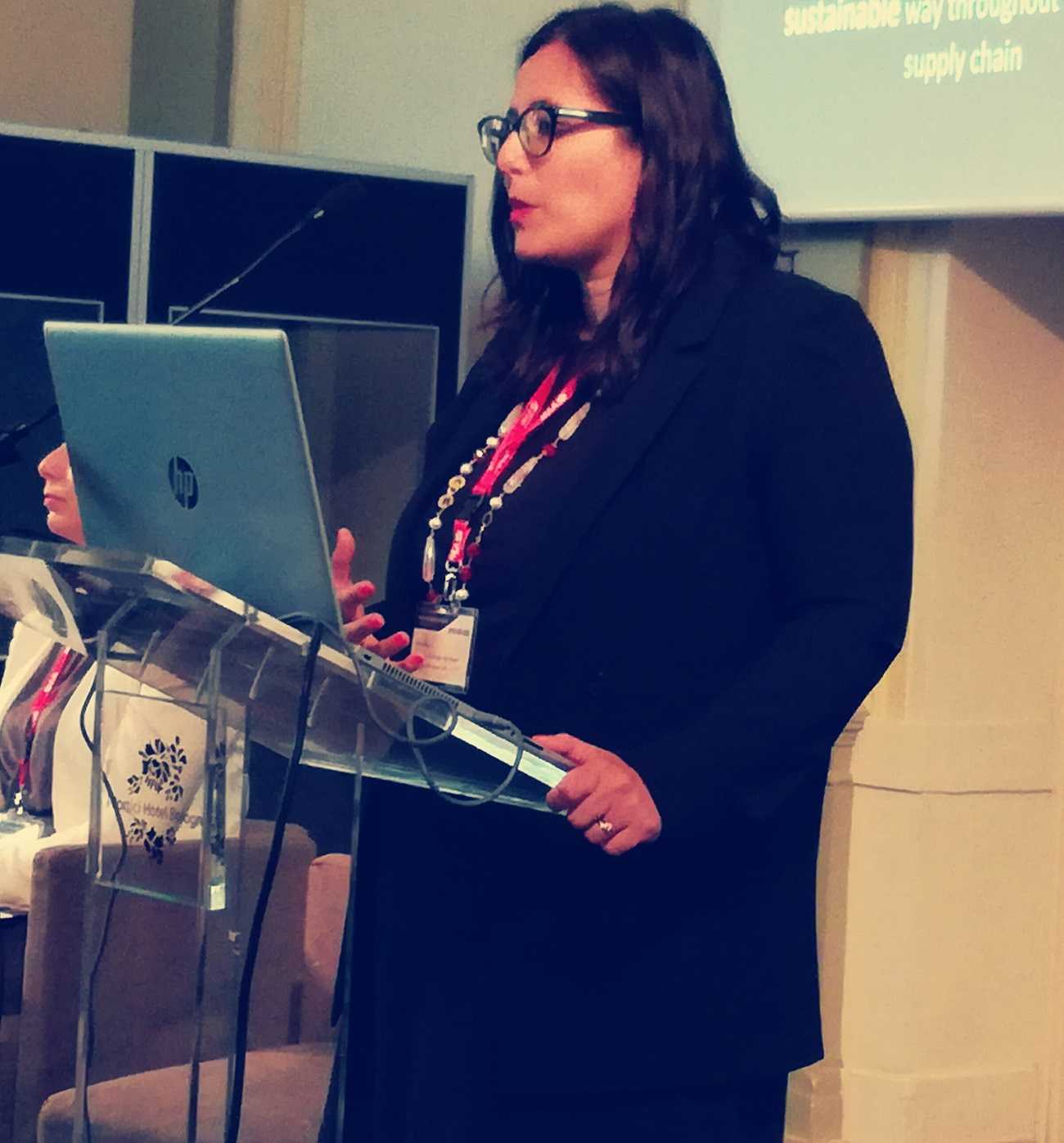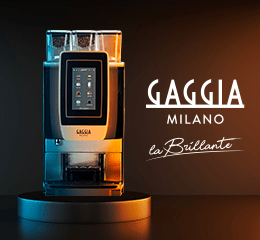by Mara Magro, Senior Research Manager at Euromonitor International
BOLOGNA, Italy – In May 2019, Italian company IMA Group held its Open Hub event in Bologna, a full day of conferences on the topics of coffee. The first speaker at this event was Mara Magro, Senior Research Manager for Beverages at Euromonitor International, presenting her interesting work on “Global consumer trends in the coffee market”.
Euromonitor International is an independent market research company. Its extensive network of analysts around the globe aims to provide strategic insights on more than 30 industries. Mara Magro’s presentation addresses the topics of consumer behaviour and coffee preferences around the world – all data and insights captured in her presentation have been collected by a team of Euromonitor analysts worldwide.
A wider view on coffee: from cold coffee, out-of-home and in-home consumption, to new business strategies
In 2018, the retail value of packaged coffee globally sold to consumers amounted to USD $88 billion. In the last twenty years, coffee has been growing tremendously around the world, both in value and volume terms – a promising performance which is expected to continue in the next five years.
Delving deeper into the coffee market, Euromonitor International has segmented the coffee market into four main categories: fresh ground coffee, coffee pods, instant coffee and coffee beans, with ground coffee and instant coffee constituting the majority of shares at a global level. Coffee pods maintain their third place yet have witnessed exponential growth, reaching 14% market share in 2013 to over 21% in 2019 globally.
Although coffee seem to be performing quite well around the globe, it is worth mentioning that there are still significant differences across regions when looking closer at the coffee subcategories.
The three biggest regions for coffee at consumer level are Western Europe, followed by North America and Asia. Interestingly, as Asia is traditionally a tea drinking region, instant coffee remains the preferred coffee formats by consumers given it is the easier way to make coffee and does not require particular brewing technic.
To the opposite, both North America and Western Europe post similar market segmentation, with ground coffee being the favourite coffee type of consumers.
An interesting observation is that instant coffee remains quite popular in Western Europe, due to its significant penetration across key countries such as Turkey and the United Kingdom – yet the latter is witnessing a consumer shift towards coffee pods variants.
A closer look at coffee formats
All four coffee categories are expected to grow at a steady rate in the next five years – with coffee beans remaining the smallest category and coffee pods showing fastest growth, as exemplified by the rise of new coffee machines.
In recent years, a new coffee format emerged across the globe: ready-to-drink coffee (cold coffee). It is gaining impressive momentum among developed markets, reaching USD $ 21 billion in 2018. RTD coffee has first gained popularity among Japanese consumers – where coffee was always consumed in a different manner than in Europe or in North America, but it was positioned in a very different way. In Japan in fact RTD Coffee has been a cheap substitute for energy drinks, available through vending machines and convenience stores.
The growth of coffee across the world is very much segmented by region – with each market showing preference for a different coffee format.
In Western Europe, the biggest growth in value terms comes from Coffee pods – where certain countries post high maturity of coffee pod adoption (i.e Switzerland) whilst others still have room for growth (i.e. United Kingdom).
In Latin America, all coffee formats post promising growth yet standard ground coffee outperforms other categories. However, as Latin American consumers are trading up for a better quality coffee, coffee pods are slowly gaining more and more traction in households.
The coffee market in Asia is quite disparate as tea remained traditionally the preferred hot drink across the region. Yet in recent years, coffee grew in popularity by integrating new channels. Coffee shops have transformed the coffee landscape by introducing consumers to innovative coffee flavours and formats, especially in China where Starbucks and Luckin Coffee grew exponentially.
The coffee culture is expanding globally: the rise of out-of home consumption
Innovations within the coffee market has helped engaging with consumers by developing new consumption occasions. Today, most consumers are looking to try on new coffee brands and order new coffee combinations. Consumers are seeking better quality coffee, and this directly translates into the rise of coffee shops. Interestingly, at an age were more and more goods are being purchased online, coffee shops remain durable and maintain their popularity, and have become an important way to drive sales.
For the next five years, coffee shops will continue to grow, creating a veritable coffee culture around the globe. In China, it is expected that more than 10,000 coffee shops will open by 2023.
In addition to consumers’ interest in the coffee shop experience, the most significant consumer trend we see today is the interest towards health and wellness. Consumers are seeking more quality food and beverages, and this is also transparent in coffee. Consumers are looking for coffee with a more natural appeal, with less sugar and new packaging.
Initially considered a simple commodity, coffee has become today a veritable social drink, enabling consumers to meet other people. Consumers are using the coffee shop experience to work – and not solely as a place to relax and enjoy coffee.
Today, all top coffee brands have today tried to capture this coffee culture by investing into foodservice. The most recent example is Coca-Cola’s acquisition of Costa Coffee to consolidate its presence in the coffee out of home space. Conversely, retail brands are also expanding into foodservice. With this new business move, coffee brands can now actively engage with consumers both in the at-home and out-of-home consumption, thus.
New consumption occasions also mean new opportunities and premiumisation
As coffee shops have expanded and introduced better coffee to consumers, and the Internet has enabled consumers to expand their knowledge of coffee, coffee is witnessing a phenomenon of premiumisation.
In addition, sustainability is at the forefront of most consumer goods, yet in coffee sustainability has a dual focus: both from the product itself, and the packaging.
Companies have to look into new packaging styles (recyclable, biodegradable, compostable, refillable) and address sustainability issues in their business model, yet they also require to consider coffee variety within their product portfolio.
This shift in consumer lifestyle, where consumers seek more premium coffee can be further developed into two movements: consumers are looking to purchase more sustainable labels (looking at organic, single-origin, Fairtrade or Rainforest Alliance certified products), and looking at how the coffee itself was brewed (coffee pod, pour-over, cold-brew). In order to drive value growth in mature coffee markets, brands need to continue to address both convenience and functionality in their product offering.
A lot of coffee players are focusing on the quality of their product. Single-origin for instance has expanded across all coffee formats: from instant to coffee beans, ground coffee and coffee pods. Italian brand Lavazza has recently launched its single-origin coffee pod with its own sustainable packaging- thus addressing both convenience and functional attributes.
Sustainability at the forefront of companies’ strategy
Across the world, consumer goods companies are putting more emphasis on sustainability in their businesses. Across the retail landscape and in foodservice, single-use plastic has become a hot topic to address. In coffee pods, there is a lot of concern about this problem and its impact on the environment. A few coffee brands are looking at new solutions – with major players launching their own recycling scheme and others trying the composability/biodegradability path.
In the United Kingdom, a couple of brands have invested in compostable coffee pods or provide 100% recyclable packaging for their ground coffee.
New reality of coffee: functionality and wider availability
Most brands have started to enter the universe of functionality in the beverage landscape. Soft drinks leader Coca-Cola for instance has launched its Coca-Cola Drinks Plus with Coffee early 2019. It seems that more brands are launching new products across each coffee category, offering a wider range of products to consumers.
And in addition to new brands and cross-category developments, coffee products are becoming wider available, with increased shelf space in retailers, wider availability in vending machines and increased presence through e-commerce channels.
The lifestyle trends: the new face for every day drinks consumption
Globally, lifestyle trends on health and wellness are going to shape everyday drinks consumptions. Bottled water and tea are expected to show strong growth as consumers are reducing their “sugary” drinks intake, leaning towards healthier drink variants and reducing their alcoholic drink consumption.
Similarly, busier lifestyles will boost coffee-to-go consumption, providing another opportunity for coffee to grow. New demand for coffee will also enable more indulgent consumption occasions, as illustrated by the rise of Frappucinos in North America and Western Europe. In cold (RTD) coffee, brands are jumping into the cold brew variant, adding extra protein content or new flavours variants.
What’s next for market leaders: the quest for scale
As coffee continues to show promising growth, market leaders need to adapt to a world where developing markets, product premiumisation and out-of-home experience are growing in importance.
Since 2012 the activities of JAB Holdings sparked a rapid wave of consolidation in the coffee industry. Other major players have adjusted their business models significantly in response, especially Lavazza and Nestlé.
Moreover, after 10 years of rumours on Starbucks’ potential presence in Italy, the world’s leading coffee brand eventually entered the Italian market with its premium “Reserve Roastery” coffee shop in Milan, offering a premium service to consumers throughout a variety of choices and occasions.
Swiss competitor Nestlé which initially focused on their own coffee brand development, started in 2017 to aggressively make acquisitions, and recently partnered with Starbucks to commercialize their product range at retail. This happened two years after Lavazza initiated its expansion with Merrild and Carte Noir followed by many others with last, but not least, Mars Drinks.
Similarly, Coca-Cola recently jumped onto the coffee trend not only with the acquisition of Costa Coffee but also launching its new soft drinks: Coca-Cola Plus Coffee.
The consolidation of the coffee market is far from being over – as new comers join the competitive landscape; this new era of coffee is here to stay.














